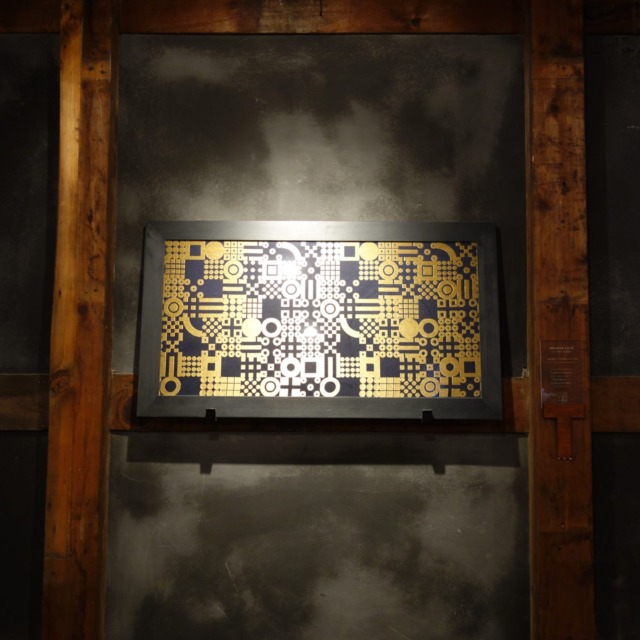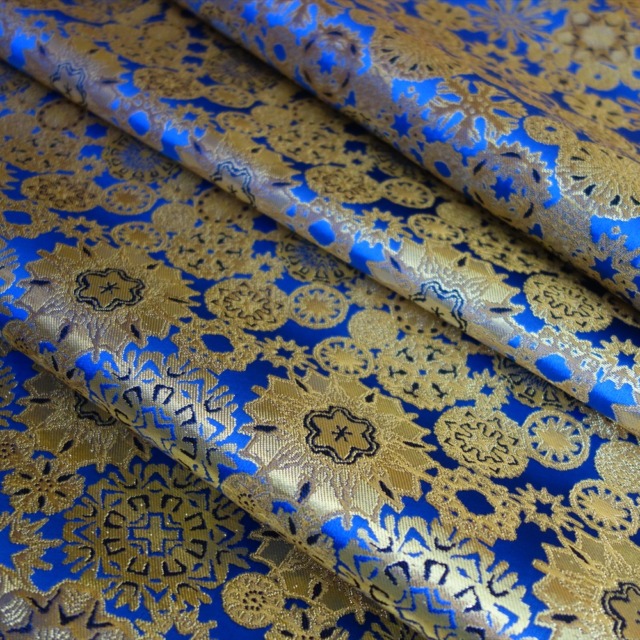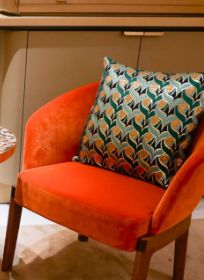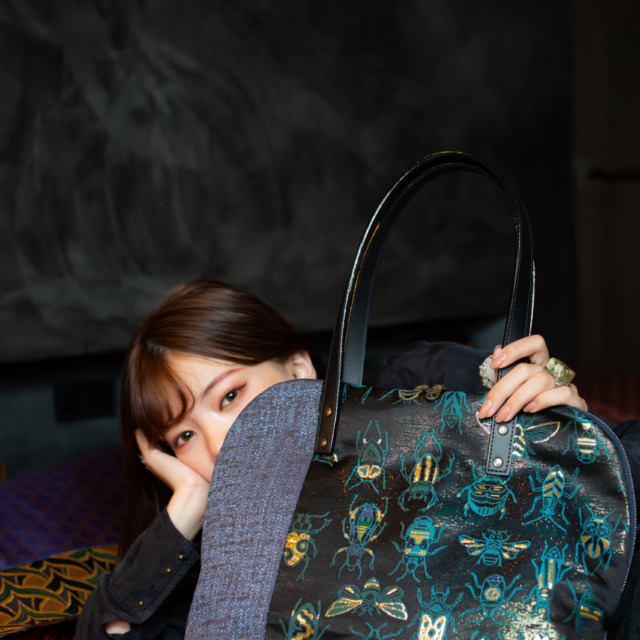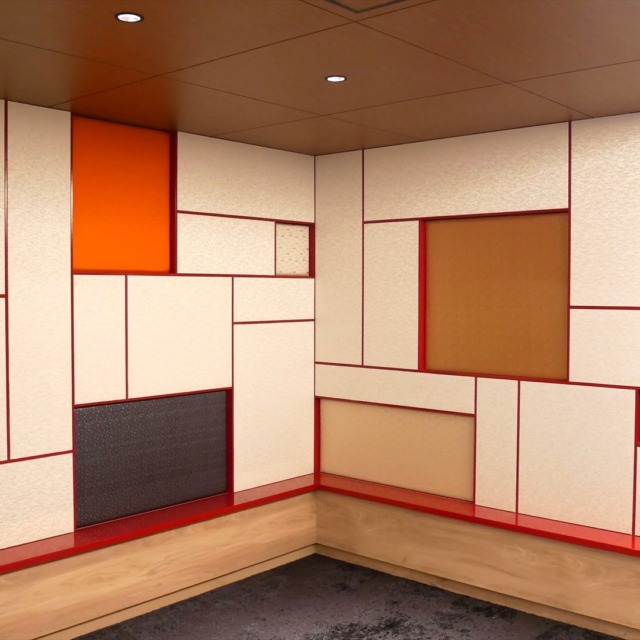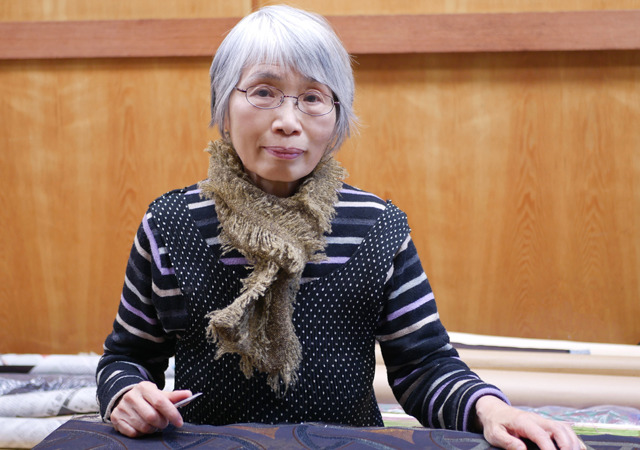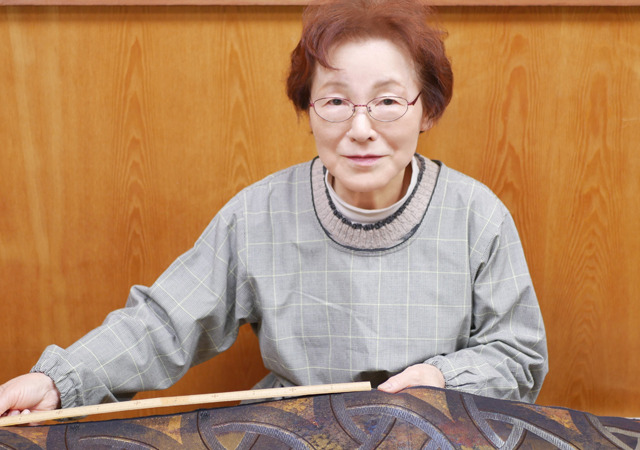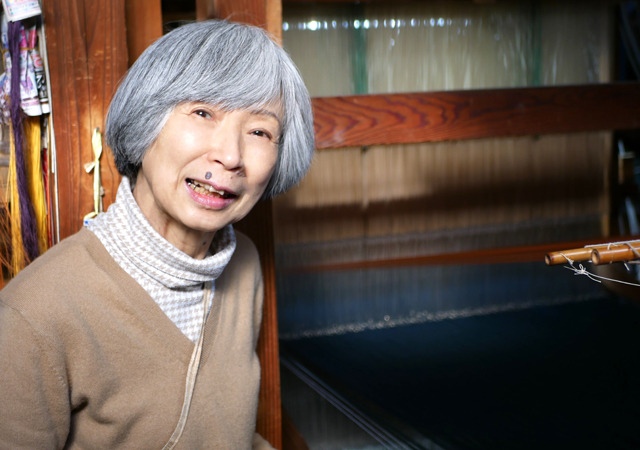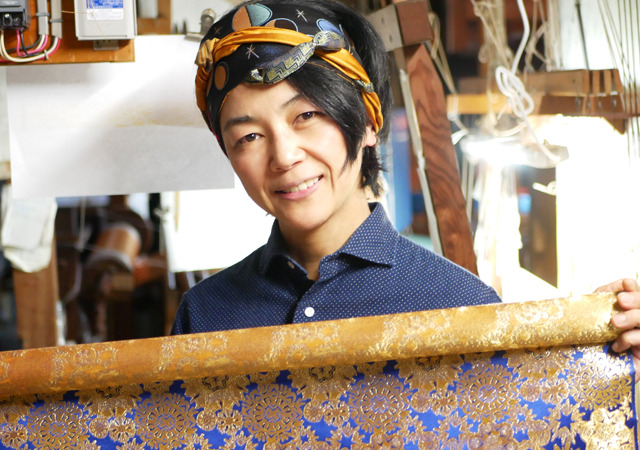
What is Nishijin brocade?
What kind of textiles are Kinran?
Kinran’s history dates back to the arrival of weaving techniques from continental Asia. They began as prized, luxurious textiles for high-ranking people. Since then, they have been used for a wide range of purposes, such as shrine and temple decorations, monks’ stoles, Noh costumes and the base material of kakejiku hanging scrolls, playing a vital role in Japanese traditions.
The Kinran produced in Nishijin is particularly renowned for the refined designs and skillful techniques, which include historic Shosoin patterns and crests that have been passed down through the generations.
Incidentally, Kinran is measured differently from other Nishijin brocade textiles. In the traditional Japanese measurement system, where kujira-shaku (around 37.8cm) is used as the unit for measuring standard fabric, kane-jaku (30.3cm) is used for Kinran.

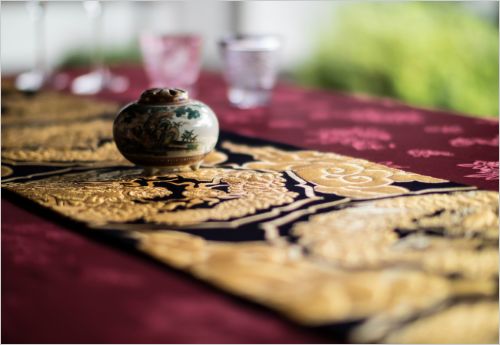
The defining characteristic of Kinran’s beauty is the gold foil and gold thread made by a unique production method. The foil, Honkinhiki-baku foil, is made by spreading lacquer on specially made washi paper, attaching metal foil (Honkin foil) on top and then slitting it into fine threads. This may be applied as it is or used to coat silk thread to make gold thread.
The gold thread or foil is woven as the weft to create a three-dimensional look and a golden glimmer that gives the patterns an even more luxurious look.
All of these processes require great mastery of the craft and attention to detail.
Silver or platinum foil may also be used.
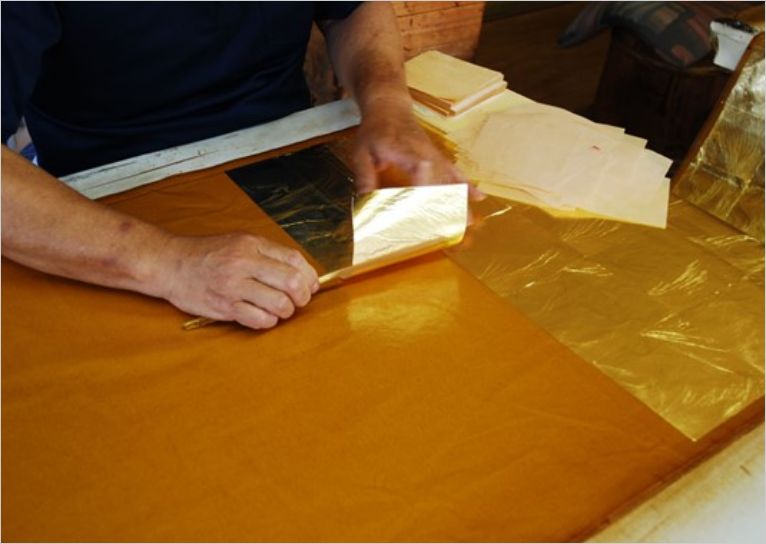

Nishijin Okamoto is skilled in “full Nishijin Kinran brocade Honkinhiki-baku foil”, which is made with luxurious quantities of Honkinhiki-baku or Honkingara foil made from washi, lacquer and 23-carat gold foil. Many of our products feature this design.
These days, only a few craftsmen are skilled in the old techniques for each process, which has made it difficult to continue those traditional methods, but we will preserve this valuable culture for as long as we can.
In Nishijin, Honkinhiki-baku foil is made in three steps: 1. applying lacquer to the washi, 2. applying the gold foil, and 3. cutting it. Each process is done by a different craftsman.
1Japanese lacquer on Japanese paper
2Applying gold leaf to lacquered Japanese paper
3Cut Japanese paper covered with gold leaf into thin, flat threads
There are three processes listed above, each handled by a different craftsman.
New Release
HIKIBAKU Nishijin Kinran Silk Brocade
pearl powder, silver leaf pattern, gold leaf
In the fall of 2023, “Nishijin brocade gold brocade with pearl-powder and silver-foil patterns with HIKIBAKU” was released using the custom-made “Nishijin brocade with pearl-powder and silver-foil patterns with HIKIBAKU”.
It was exhibited at the “Nishijin Textile Industry Association 50th Anniversary 2023 Nishijin Textile Convention” and won the Minister of Education, Culture, Sports, Science and Technology Award.
The production process of this product will be open to the public.
How Nishijin Kinran Silk Brocade are made
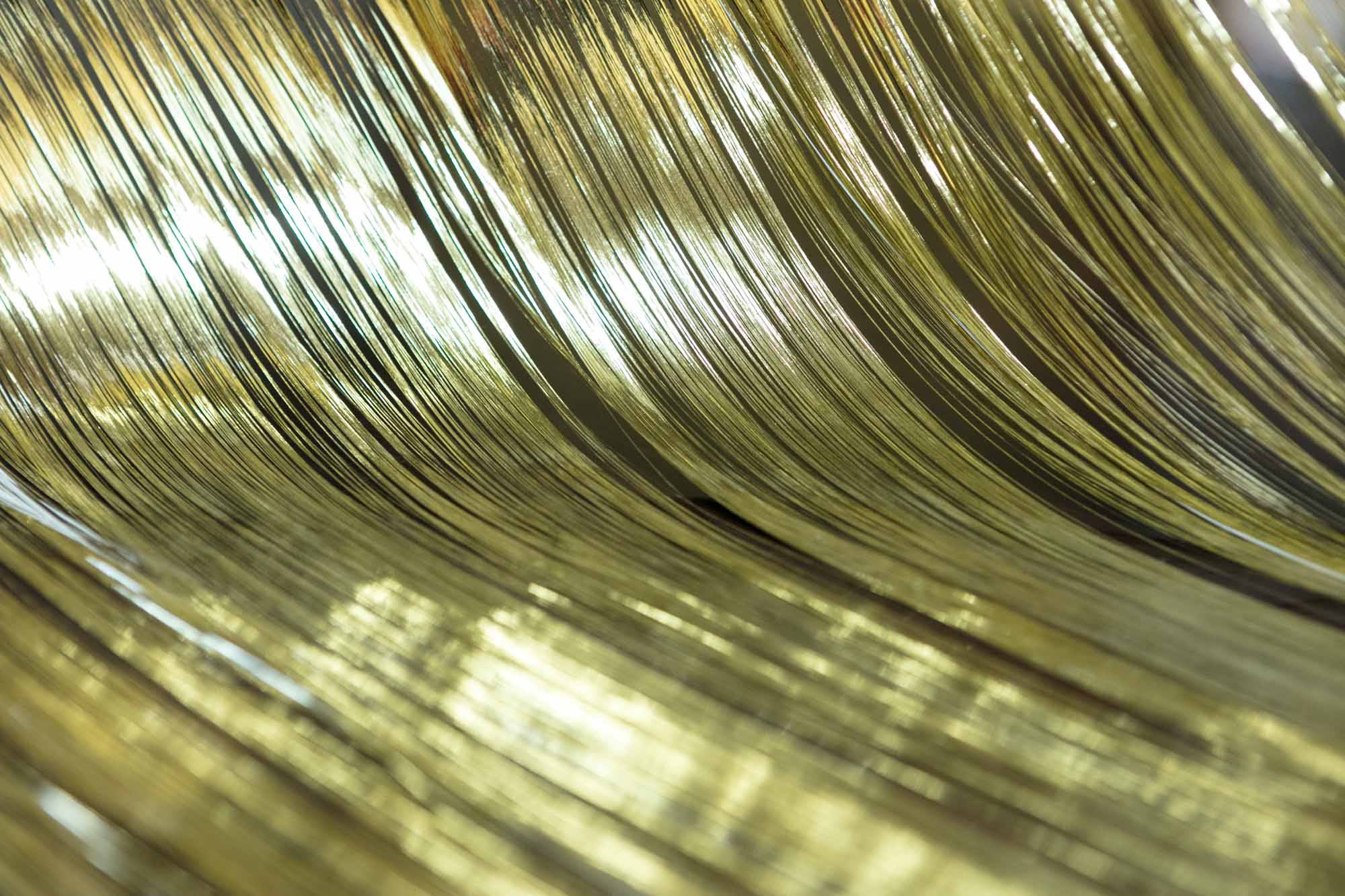
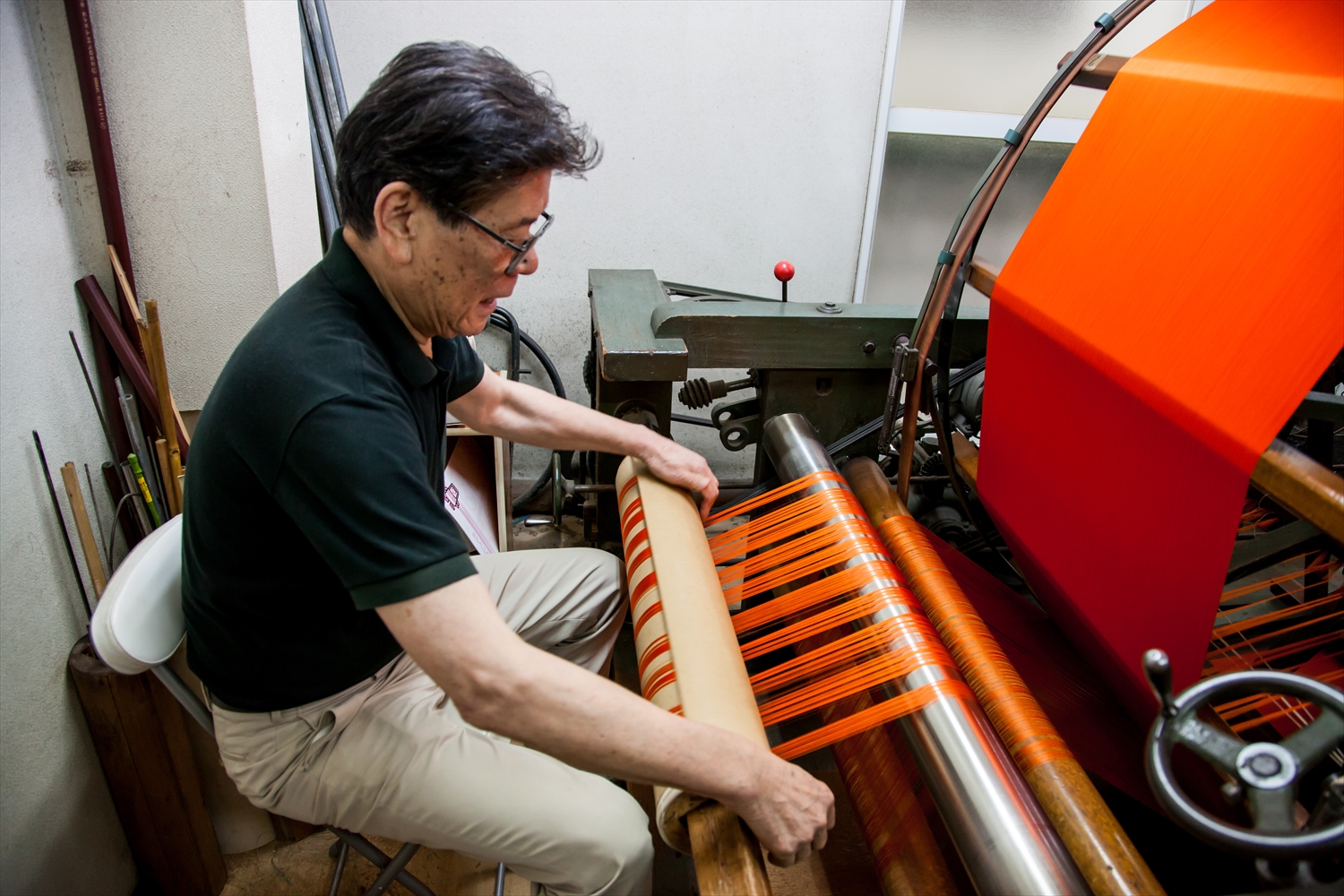
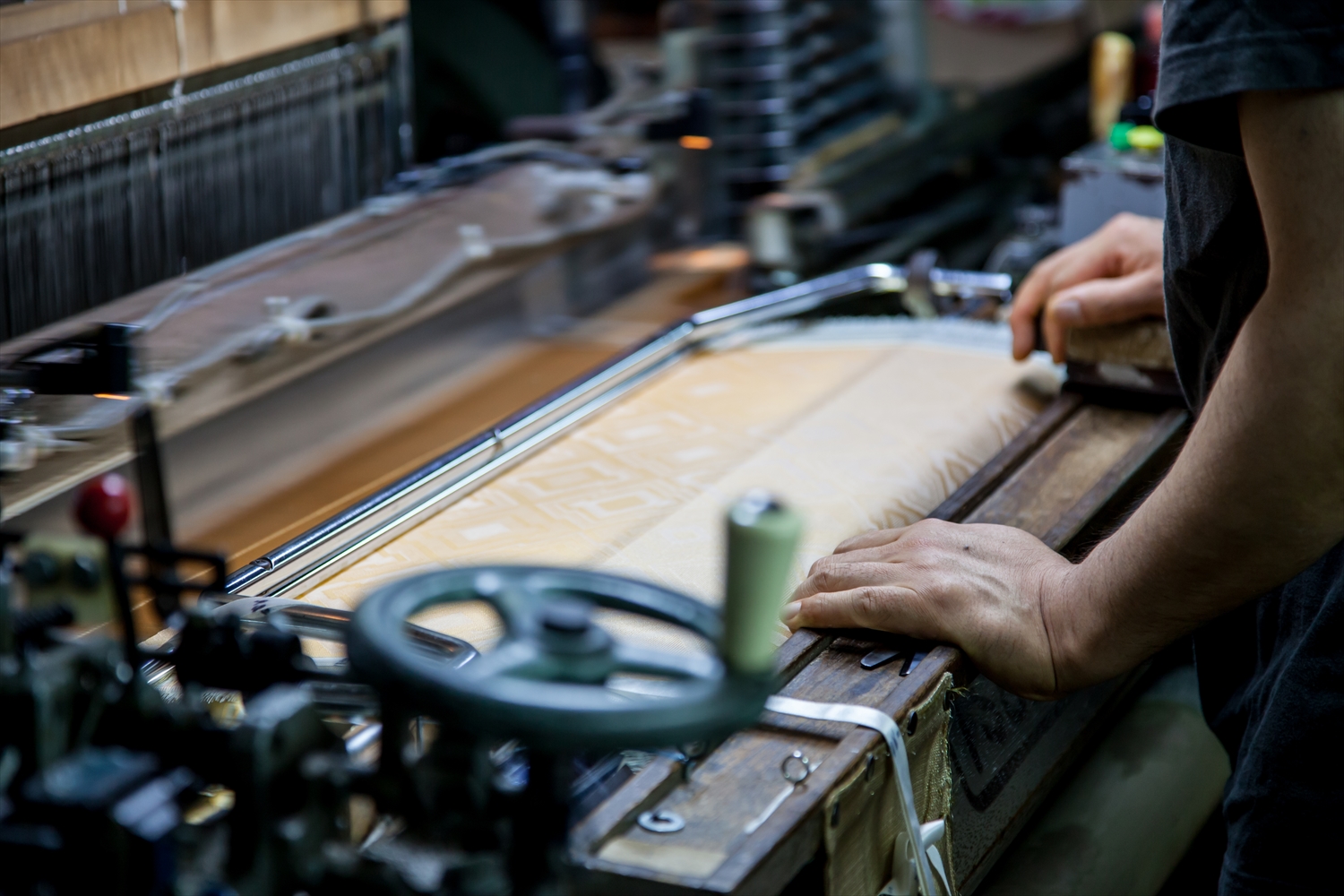
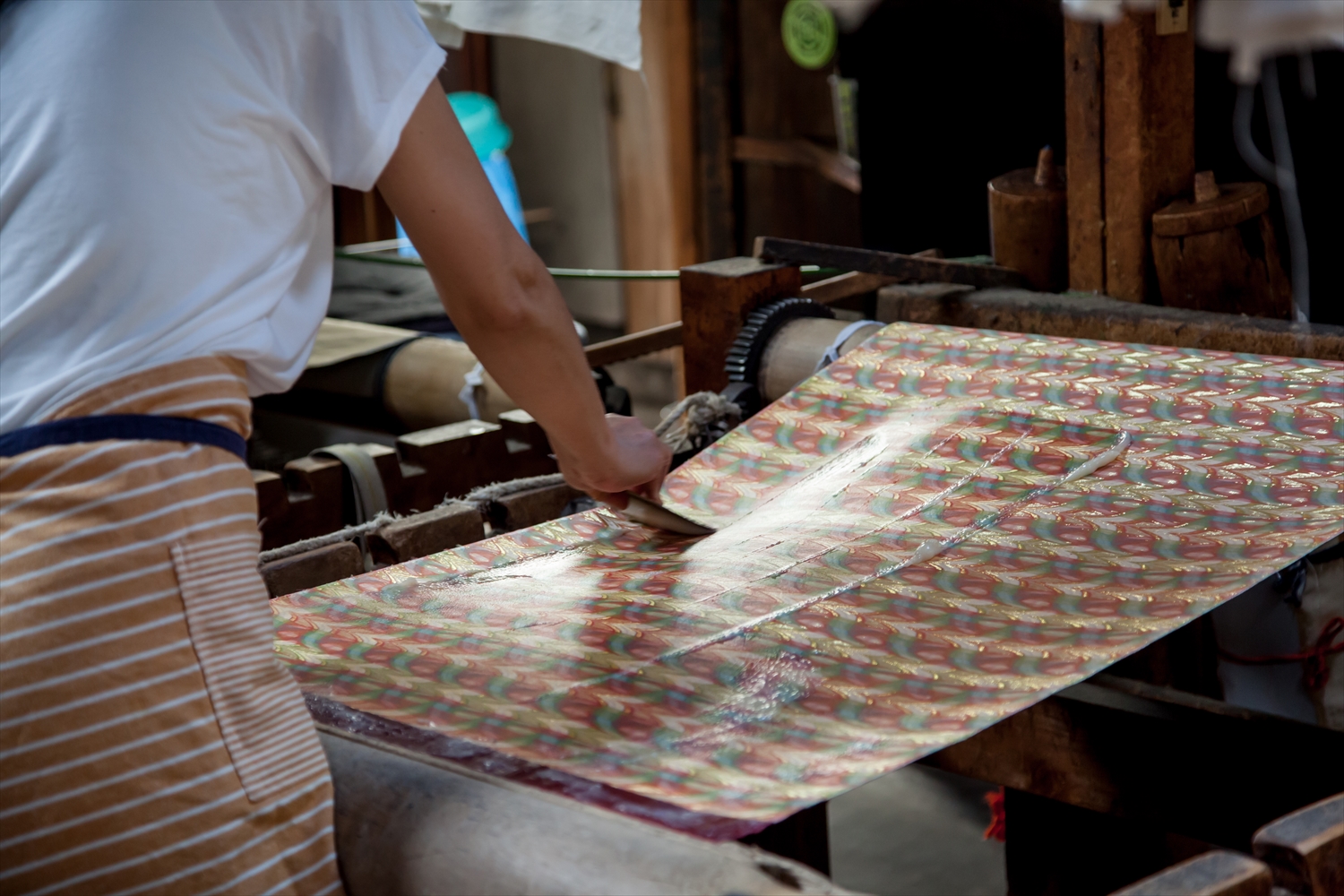
- Sericulture
Make raw silk from cocoons secreted by silkworms. - Cloth draft
Draw Mon meaning cloth draft for textile fabric. - Gold leaf
To make gold yarns, lacquer Japanese paper and cover with 23 carat gold leaves. - Dyeing
Dye silk yarns.Adjust colors little by little and have them dyed in the color we would like.
Slowly dry them. - Warping
Warp the silk yarns and wind them into a warp beam (Chikiri.)
Our fabrics have about 6000 to 15000 warps at 70 cm. - Joining warp
Piece the warps, which is called Tatetsugi, to change the color.
Piece the silk yarns one by one. - Reeling
Reel the silk yarns on awooden Yarn Winder. - Quilling
Wrap the horizontal yarns (wefts) onto a thin bamboo tube called Kuda. - Weaving
Weave with machine.
This is when weaving the fabric, which is interwoven with Pure Gold Foil Yarn.
Pure Gold Foil Yarns are made by pasting gold leaves on Japanese paper and slicing them.
We draw these yarns one by one and weave them.
It takes a lot of time to weave one piece. - Cloth inspection
Inspect the finished weaving silk fabric.
Inspections are done at least twice.
Cut and treat the edge of cloth carefully.
Remove all the lint and dust by a magnifying glass. - Finishing
A : Process after inspected silk fabrics.
This is the lining and straightening process with glue mixed up with Funori (boiled seaweed) and Starch.
We do this process one by one with our hands.
B : Apply a softening treatment.
C : Apply a water-repellent finish.
Video Introduction
Nishijin Kinran Silk Brocade go through many craftsmen’s work before they are completed.
Please take a look at the video to see how it is done.
There are 11 craftsmen in this video, but many more are actually involved.
All the craftsmen are working hard day in and day out to deliver a great product to our customers.

